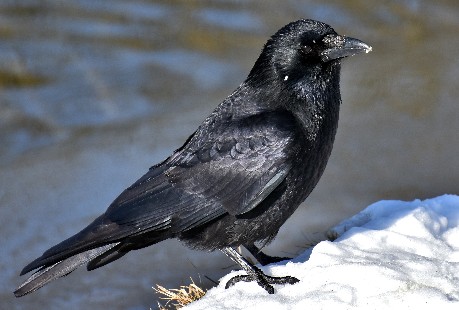Wednesday 25th April 2018, 3:59pm
Bird conservation campaigners have expressed concern about the license and have raised questions about the scientific reasoning for culling 60 ravens each year for the next five years in this upland area which runs between Loch Tay in the east and the A9 in the west.
SNH say that “this licence is about a pressing and complex conservation issue." It describes it as a "large-scale collaborative trial to help improve understanding of the factors affecting key wader species, populations of which are declining in Scotland's uplands."

Duncan Orr-Ewing, Head of Species and Land Management for RSPB Scotland said “The link between increases in raven populations and declines in breeding wading species across the British uplands is weak” and cites a report commissioned in 2010 by SNH and produced by Aberdeen University and RSPB that investigated links between ravens and upland waders across Britain.
The RSPB has also highlighted that this license supports the intensive management of grouse shooting estates in the area, which seek to minimise raven predation of the red grouse they breed. The RSPB identifies this upland area as a "raptor persecution black hole, where golden eagles and other protected raptors suspiciously disappear without trace or explanation", including the recent disappearance of a white-tailed eagle in Glen Quaich.
Mountaineering Scotland seeks to represent the interests of mountaineering community in Scotland on a range of landscape and conservation matters affecting Scotland's hills and crags and the raven is perhaps one of the most iconic bird species seen and heard by hillwalkers and climbers in the mountain environment. In autumn 2017, 80% of the Mountaineering Scotland members who completed a survey to gather their views on conservation matters affecting the mountains felt that "intensive land management to maintain grouse moors" was a risk to the upland landscape.
We have long called for SNH to develop a strategic upland vision to safeguard the mountain environment from a range of competing challenges. In November last year, we joined a coalition of environmental and outdoor organisations and appealed to the Scottish Government to introduce urgent safeguards for mountain hare populations, asking for a temporary ban on all mountain hare culling on grouse moors until measures are put in place to ensure their numbers can remain at acceptable, sustainable levels.
Mountaineering Scotland also encourages outdoor climbers to be aware of raven nests when climbing at this time of the year and has coordinated a successful partnership with raptor study groups to provide up-to-date information on nest sites on mountain and coastal cliffs and crags to help minimise disturbance and improve climbers' understanding of bird behaviour.